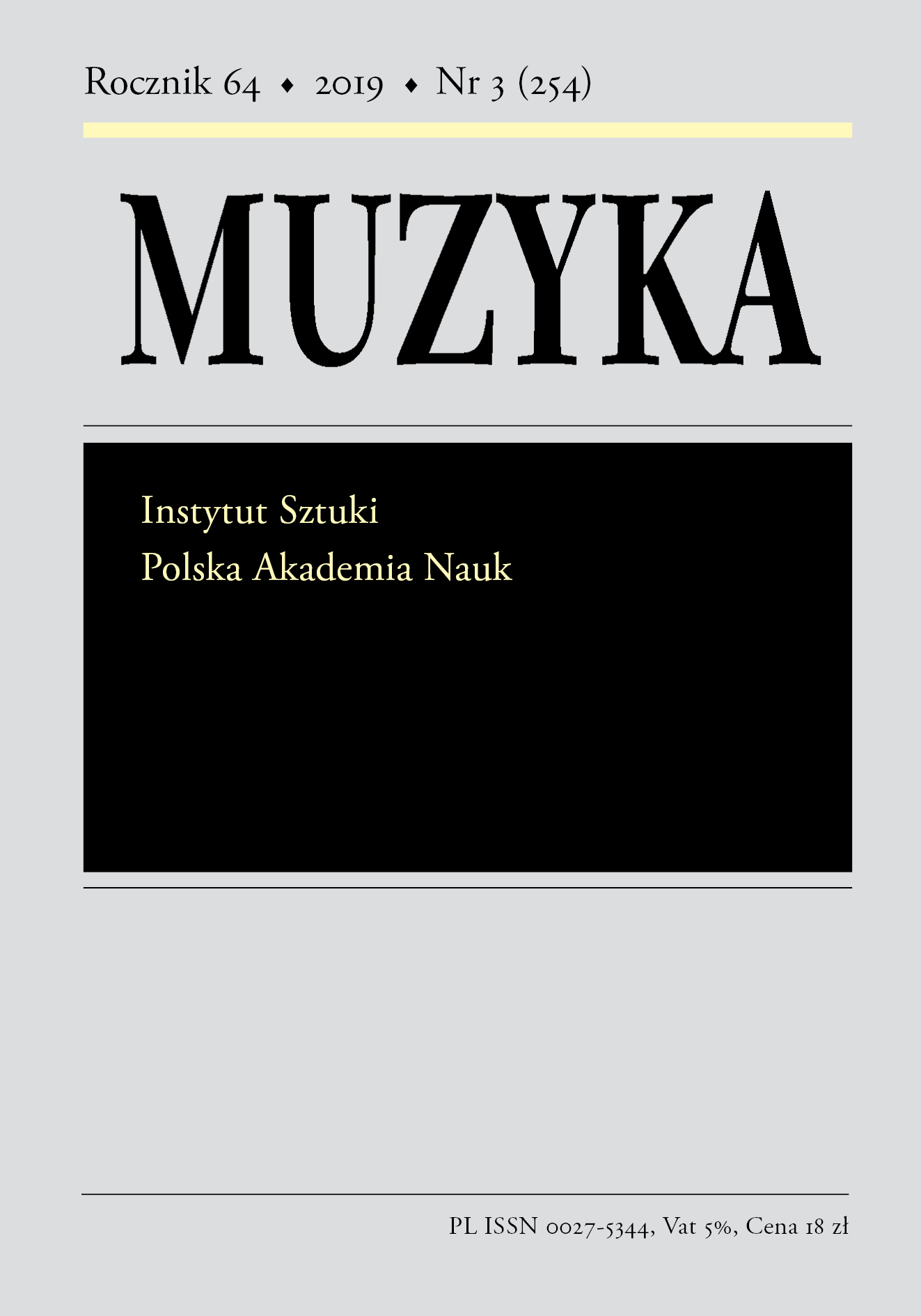Zjawisko muzycznych idées fixes w twórczości kompozytorskiej Eugeniusza Morawskiego: w poszukiwaniu genezy i interpretacji
The phenomenon of musical idées fixes in Eugeniusz Morawski’s composition works: In search of genesis and interpretation
Author(s): Oskar ŁapetaSubject(s): Music
Published by: Instytut Sztuki Polskiej Akademii Nauk
Keywords: Eugeniusz Morawski; idée fixe; twentieth-century music; 'Ulalume'; 'Nevermore; 'Świtezianka'; 'Lilla Weneda'
Summary/Abstract: The article deals with compositions by eugeniusz morawski in which the composer uses one of his constantly recurring ideas, or idées fixes. The first of those ideas appears in a letter sent to his closest friend, the Lithuanian painter and composer Mikalojus Konstantinas Čiurlionis, in which Morawski describes a funeral march with the tolling of bells that are used harmonically as a plagal cadence in frst inversion with the third of the triad in the bass.This bell motif was used by Morawski in almost all of his most important works, such as the symphonic poems based on verse by Edgar Allan Poe, 'Nevermore' and 'Ulalume', the two ballets 'Świtezianka' [The nymph of Lake Świteź] and 'Miłość' [Love] and the incidental music to Juliusz Słowacki’s play 'Lilla Weneda'. In all these works, this motif occurs at moments symbolising death and oppression. Sometimes it is even more sinister, because Morawski used itas an accompaniment to themes symbolising hope. The second idée fxe might be called the theme of a woman’s death. It first appears in 'Nevermore', where it serves as a second theme, it illustrates the protagonist’s deceased beloved, Lenore. This theme appears for a second time at the very beginning of 'The nymph of Lake Świteź', where it functions as a kind of motto, anticipating the death of the main female character, Sagna. It is used with an identical purpose in the incidental music for 'Lilla Weneda'. Both themes recur constantly in fve important compositions by Morawski, written between around 1911 and1930. They seem to have had very signifcant meaning for the composer, although he never wrote about them. They may have represented autobiographical, intimate and obsessive symbols, so the term idée fixe is more than appropriate.
Journal: Muzyka
- Issue Year: 64/2019
- Issue No: 3
- Page Range: 69-90
- Page Count: 22
- Language: Polish

